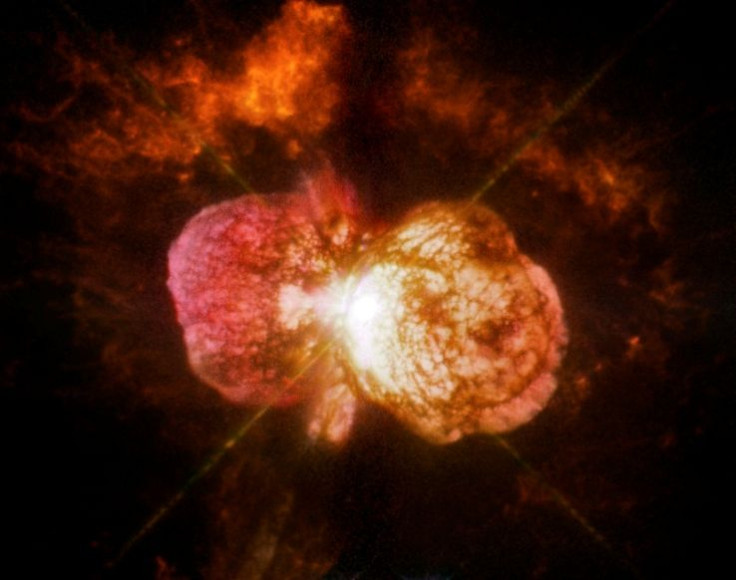Hubble Captures Cosmic Fireworks Just In Time For 4th Of July Celebrations

Hubble Space Telescope’s latest capture, a display of cosmic fireworks comes just in time for the 4th of July celebrations. Displaying a hue of reds, blues and whites, the high resolution image of the double-star system Eta Carinae is a wonder.
Scientists, according to Phys Org, say that Eta Carinae underwent a cataclysmic outburst called the Great Eruption in 1838. The eruption escalated then to become the second brightest star in the sky, which it achieved in 1844.
The latest capture by Hubble shows that the process is still continuing. In 2008, the European Space Agency described Eta Carinae as one of the most violent places in the galaxy as it produces vast winds of electrically-charged particles colliding at speeds of thousands of kilometers per hour. “It contains between 100 - 150 times the mass of the Sun and glows more brightly than four million Suns put together,” said the Agency.
Through the latest image, researchers were trying to find light from magnesium coming from the array of filaments. Instead, they found a whole new luminous magnesium structure in the space between the dusty bipolar bubbles and the outer shock-heated nitrogen-rich filaments.
Nathan Smith, the lead investigator of the Hubble program, said they have discovered a large amount of warm gas that was ejected in the Great Eruption.
“Most of the emission is located where we expected to find an empty cavity. This extra material is fast and its ups the ante in terms of the total energy of an already powerful stellar blast,” he explained.
Jon Morse, a team member highlighted the streaks visible in the blue region outside the lower-left bubble. Morse said the streaks appear where the star’s light rays poke through the dust clumps scattered along the bubble’s surface.
“The pattern of light and shadow is reminiscent of sunbeams that we see in our atmosphere when sunlight streams past the edge of a cloud though the physical mechanism creating Eta Carinae’s light is different,” he explained.
Smith said the new ultraviolet-light image looks very different and reveals gas they hadn’t seen in either visible-light or infrared images. “We are excited by the prospect that this type of ultraviolet magnesium emission may also expose previously hidden gas in other types of objects that eject material like dying stars,” he said.
Scientists are also using this data to understand how the eruption began because it represents the fast and energetic ejection of material that may have been expelled by the star just before the expulsion of the rest of the nebula.
© Copyright IBTimes 2024. All rights reserved.





















